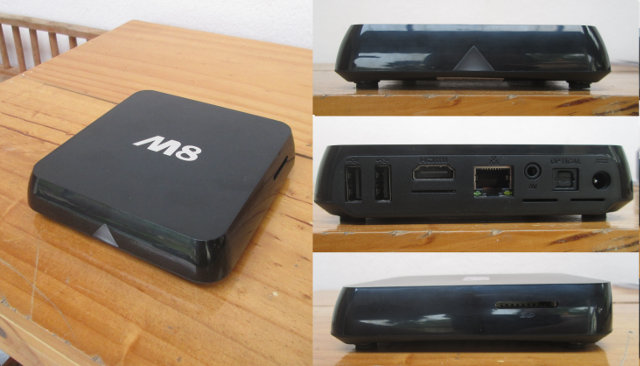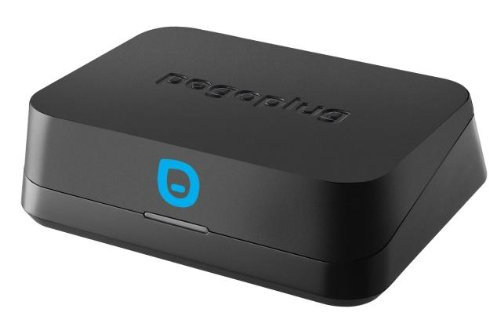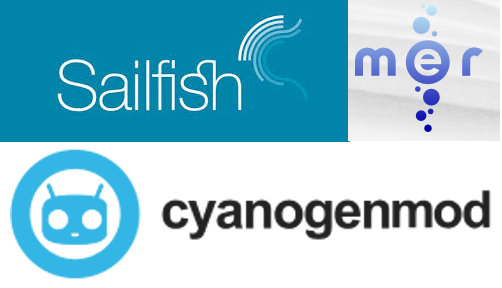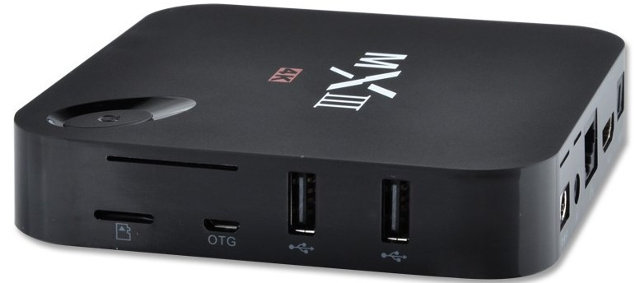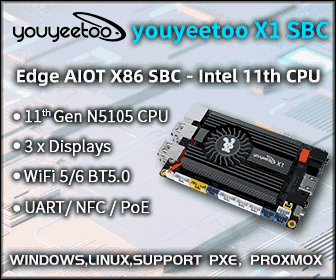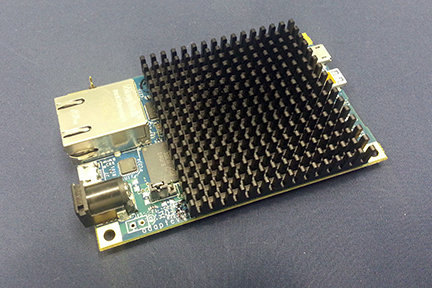SZ Tomato / Eny (E)M8 is an Android TV box powered by Amlogic S802 quad core processor, with 2GB RAM and 16 GB flash, but Stane1983 has been working on an XBMC Linux port for the device, and has released a beta version on Freaktab a few days ago. The firmware file (MX_LINUX-K200-update.zip) is available, and just need to be copied to an SD card to perform the update. The version is Gotham 13.1. This will completely replace you Android installation, and only works on M8 TV box, as the bootloader is not compatible with other S802 hardware, and the firmware only support AP6330 Wi-Fi module. If you decide not to keep using XBMC Linux, you can revert to Android, but reflashing the firmware via the SD card. This is a beta version, so expects some bugs. The list of known bugs is as follows: Bootlogo and splashscreens (booting up/shutting […]
The World’s Cheapest Linux Computer? Pogoplug Mobile Now Sells for $7
Somebody asked “Anyone knows a computer cheaper than a Raspberry Pi with a network interface?” on Google+ mini PCs community. Some OpenWRT routers such as TPLink WR703N selling for about $20, or the VoCore Wi-Fi module selling for about the same price (Wi-Fi only) were parts of the answers, and I also mentioned some HDMI TV dongles that now sell for around $35, which is still a little cheaper than the Raspberry Pi model B when one considers shipping. But I found the answer by dhead666 particularly interesting: Pogoplug Mobile goes for 7$ on Amazon and that includes psu and network cable. It run Linux great (I’m using Arch) but you will want to have a ttl-usb cable and soldering iron available in case you manage to mess u-boot (go to the doozan’s forums for more info about the u-boot). Let’s have a look. Pogoplug Mobile is not a new […]
Jolla Releases Sailfish OS Hardware Adaptation Development Kit for Android (CyanogenMod)
If you don’t quite have the spare cash to buy a Jolla Phone, or don’t own a Nexus 4, but still want to try Jolla’s Sailfish OS on your smartphone, here’s your chance, as Jolla has just released their “Sailfish OS Hardware Adaptation Development Kit”, which allows you to install Sailfish OS on any Android phone that supports CyanogenMod 10.1. The development kit is comprised of: Mer core – The Linux userspace core Android Hardware Adaptation (HA/HAL), consisting of: Device-specific Android Kernel Binary device drivers taken from an Android ROM (e.g. CyanogenMod) The libhybris interface built against the binary drivers Middleware packages depending on hardware-specific plugins A Qt/Wayland QPA plugin utilizing the Android hwcomposer Sailfish OS component You’ll a smartphone and a build machine matching the following hardware and software pre-requisites: Smartphone ARMv7 Android device officially supported by CyanogenMod 10.1.x Means to do backup and restore of the device contents […]
Amlogic S802 TV Boxes Are Getting Cheaper: Meet $72 MX3 (M82) TV Box
When Android media players based on Amlogic S802 first launched a little over 3 months ago, they all sold for over $100. Since then various products have come to market, with prices slowly edging lower. But none comes as cheap as MX3 (aka M82), whose name is probably inspired from Gbox Midnight MX2, as it sells for $72.22 on GearBest including shipping. [Update: It can be found for $70 on DealExtreme] Let’s go through the specifications: SoC – AMLogic S802 quad core ARM Cortex A9r4 at 2.0GHz with ARM Mali-450MP6 GPU System Memory – 1GB DDR3 Storage – 4 GB NAND Flash + micro SD card slot Video and Audio Output – HDMI and AV Connectivity – 10/100M Ethernet, Wi-Fi 802.11 b/g/n, USB – 2x USB 2.0 host ports + micro USB OTG Misc – IR Sensor, Power LED, power button, and recovery/update switch via AV jack Power Supply – […]
NEJE ZB01 Clone of Google Cardboard Virtual Reality Kit Sells for about $12
Can you remember Opendive, a low Cost DIY open source 3D virtual reality kit for smartphones? The kit can be built by anybody as long as you happen to own a 3D printer. But Google liked the concept, and at the latest Google I/O, the company designed the cardboard equivalent using the same lenses, and adding accessories namely a magnet, Velcro strips, and a rubber band to complete the kit. But some people saw a business opportunity here, and created NEJE ZB01, a nearly identical reproduction of the Google kit that can be bought for $12.66 on DealExtreme, instead of the $19.95 you’d have to pay for the original kit. The complete kit includes the cardboard, a rubber band, two magnets with 2cm diameter, two lenses with 2.3 cm diameter, and a pair of Velcro strips. It’s suppose to work with device using displays between 4″ and 7″ large. You’ll […]
Onda V989 AllWinner A80 Android Tablet is Now Available for Pre-order
AllWinner A80 octa-core big.LITTLE has been delayed several times, but it appears products based on the latest AllWinner application processor can finally be pre-ordered. One of them is Onda V989, an Android 4.4 tablet with a 9.7″ 2048 x 1536 pixel display, 2GB RAM and 32GB flash, that’s supposed to reach over 48,000 in Antutu, but actually gets a little over 32,000 points in Antutu X. Onda V989 tablet specifications: SoC – AllWinner A80T octa core bit.LITTLE processor with 4x ARM Cortex A7 cores @ ?? GHz and 4x ARM Cortex A15 cores @ 2GHz, and PowerVR G6230 GPU System Memory – 2GB DDR3 Storage – 32GB NAND flash + micro SD/SDHC slot (up to 128GB) Display – 9.7″ IPS display with 10-point capacitive touchscreen, 2048 x 1536 resolution Video Output – micro HDMI (up to 1080p) Audio I/O – Stereo speakers, built-in microphone, 3.5mm earphone jack, and HDMI Connectivity […]
Intel Announces Galileo Gen 2 Development Board Based on Quark SoC
As many of us are waiting for our Intel Galileo board promised by Microsoft, and right after the Raspberry Pi foundation announced the Raspberry Pi Model B+, Intel has introduced a new version of the Galileo board which they simply call Galileo Gen 2. The development board is still powered by Intel Quark single core SoC (Pentium class) and with the same key features as the original Galileo Board, but with some tweaks based on the feedback from the community. Intel Galileo Gen 2 specifications (Changes in Bold): SoC- Intel Quark SoC X1000 single core, single-thread application processor @ 400 MHz, with 12KB embedded SRAM System Memory – 256MB DDR3, 5 Storage – 8MB NOR fklash, 8KB EEPROM, and micro SD card slot (up to 32GB) Connectivity – 10/100M Ethernet USB – 1x USB 2.0 host port, 1x micro USB 2.0 device port used for programming Debugging / Programming 10-pin […]
Adapteva Announces Three Parallella Fanless Boards for Microserver, Desktop, and Embedded Applications
Adapteva’s Parallella low cost open source hardware “supercomputer” is a board powered by Xilinx Zynq-7010/7020 dual core Cortex A9 + FPGA SoC and the company’s Ephipany epiphany coprocessor, that’s had a successful Kickstarter campaign in 2012 as the 16-core version sold for just $99, and is capable of handling applications such as image and video processing, and ray-tracing, and also comes with an OpenCL SDK. The board was fairly difficult to source after the crowdfunding campaign, and one the common complain of backers was the board had to be actively cooled by a fan. The company has fixed both issues by increasing slightly the price, and redesigning the board so that it can be passively cooled by a larger heatsink. There are now three versions of the parallela board: Parallella Microserver ($119) – Used as an Ethernet connected headless server Parallella Desktop ($149) – Used as a personal computer Parallella […]


